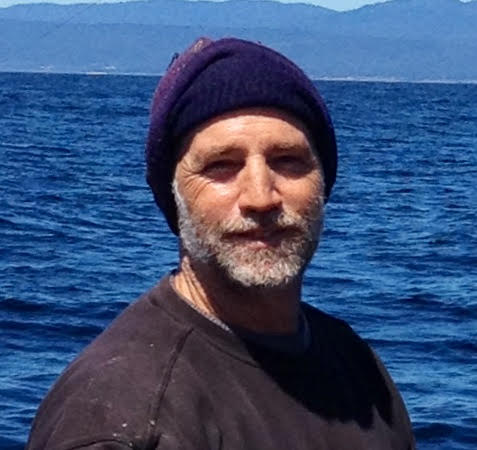Is the so-called “ropeless” fishing gear the silver bullet for solving the perceived problem of marine mammal interactions in California’s crab fisheries?
Several profit-driven environmental groups, including Oceana, would like the public and the California Department of Fish and Wildlife to believe these baseless claims.
Yet these groups are ramping up efforts to force California’s historic and economically most important fishery – which creates hundreds of millions of dollars annually for working families – to adopt expensive, impractical, and unworkable new fishing gear, which would force most crab fishermen out of business.
But the problem is that neither the science, nor any other reliable data, support their false claims. “Ropeless” gear is not a silver bullet — in fact, it’s actually dangerous — and ironically, it still has ropes. Nor are marine mammal populations currently at any significant risk.
Francine Kershaw, staff scientist with the Natural Resources Defense Council, has misleadingly asserted that “off the West Coast, the number of deaths of humpback whales caused by entanglements are now high enough for the population to slip into decline.”
But the truth is there have only been four mortalities attributed to California commercial Dungeness crab gear since 2013, and none during last two seasons. So, the minimal mammal interaction with crab gear has a negligible impact on the health of these species.
However, strikes by large ships likely cause 50-150 whale deaths a year off the West Coast, according to statements made by John Calambokidis of the Cascadia Research Collective, a highly respected marine mammal study center.
In fact, based on preliminary data presented by the collective at a public meeting in November 2019, humpback whale populations off the coasts of California and Oregon have grown by about 80 percent since 2013, and estimated at 220 percent growth since 1998.
Meanwhile, Ms. Kershaw, perhaps blinded by the millions of dollars being thrown at her by non-fishing special interests, has also attacked lobster fishermen on the East Coast by falsely saying, “entanglements are driving the critically endangered North Atlantic right whale to extinction.”
However, Maine's lobster fishery has never had a documented serious injury or mortality for any right whale, and no entanglement since 2002, which makes this a non-problem.
But the lack of interactions with lobster gear hasn’t stopped for-profit environmental groups from pushing “ropeless” gear on the East Coast lobster fishery.
One of the problems with “ropeless” gear is that it’s a misleading term used by the profit-driven environmental groups — and manufacturers — to make it seem harmless. The gear they are pushing all have buoy lines packed on top of the trap with an acoustic release trigger that in theory allows the buoy to go to the surface when activated.
In practice, this adds to the problem of lost gear with ropes and buoys attached. It’s much more dangerous to marine life because it litters the ocean unnecessarily with lost lines and other equipment.
How do we know this? Fishermen have tested the pop-up “ropeless” gear in the East Coast lobster and West Coast Dungeness crab fisheries. The release mechanisms failed 20 percent of the time and had to be abandoned.
Currently, fishing traps cost between $160-225 each. But the pop-up “ropeless” gear will cost as much as $2,500 per trap. That means for a 500-trap tier operation to adapt an existing gear allotment to 100 percent pop-up gear, it would cost between $360,000 to $1.25 million.
All this extra money would be thrown at gear that is unmanageably slow and prone to be lost at sea. It would make profit impossible. And importantly, it would make marine mammal interactions with lost gear more frequent, not less.
That being said, the commercial fishing industry is committed to our long-standing and successful work to reduce interactions between fishing gear and all marine mammals. That is why Californai Coast Crab Association and Maine Lobstermen’s Association have been working diligently on alternative gear proposals that are better, more practical, affordable, and most importantly based on the best available science, something that "ropeless" gear is not.
For many years, the commercial fleets on both coasts have been making modifications to their gear and to some fishing seasons to mitigate the risk to marine mammals. These common-sense measures have resulted in huge reductions in interactions.
“Ropeless” gear and other new rules which the CDFW will turn into law in a few months constitutes a solution in search of a problem. These “solutions” being pushed by outside interests must be seriously reconsidered to reflect the negligible impact of the California crab fishery, its cultural and economic importance to our coastal communities and the devastating potential consequences of the implementation of ideas like “ropeless” gear. Testing of this gear has revealed many operational issues for the East Coast lobster fishery — which has thousands of small independent fishermen. The technology is faulty, and furthermore, the economics of converting and maintaining this type of system are unsustainable. And it’s the same in California.
“There are more than 570 permitted vessels, according to NOAA, with nearly 2,000 crew and tens of thousands of shoreside jobs supported by the fishery in unloading, processing, distributing, food service and retail. The economic impact is huge so it bears repeating that this fishery creates hundreds of millions of dollars annually for working families.”
In sum, if the CDFW doesn’t ignore the political pressure from special interest, profit-driven environmental groups, the continuation of California’s crab fishery — and the thousands of families who depend on it — and indeed the future of the entire West Coast commercial fishing industry, will be in serious jeopardy.
Ben Platt is a lifelong crab fisherman and president of the California Coast Crab Association.
Kristan Porter is a lobster fisherman and president of the Maine Lobstermen's Association.
More information at www.cacoastcrabassociation.org and www.mainelobstermen.org.







